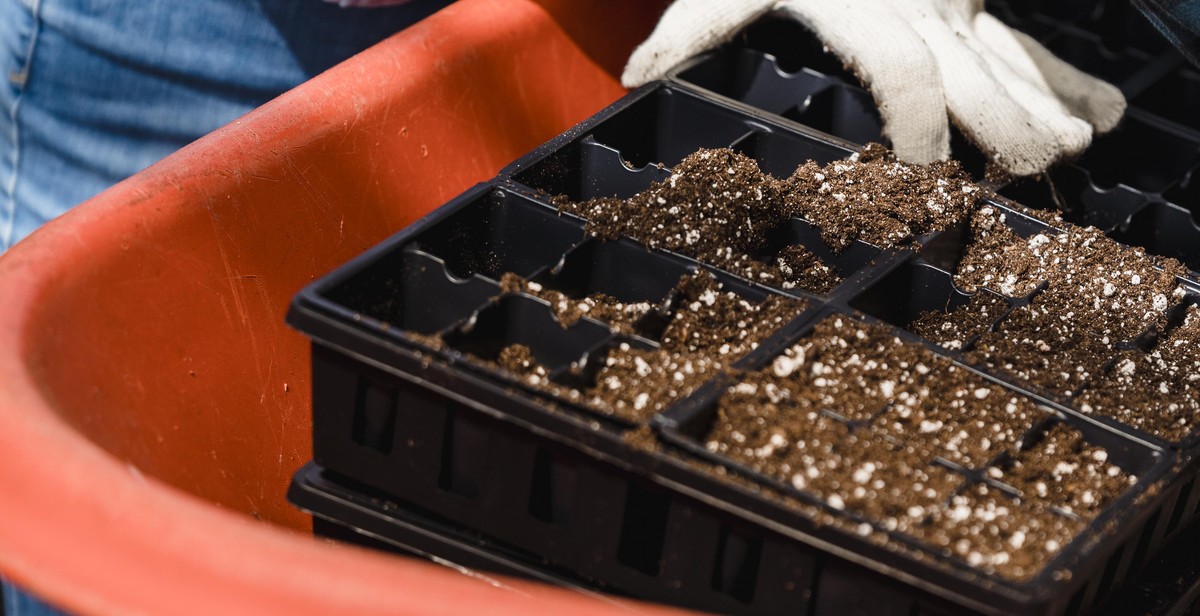Introduction
Vertical gardens are a popular way to add greenery to small spaces and create a stunning visual display. Also known as living walls or green walls, vertical gardens are a technique of growing plants vertically on walls or fences. This technique can be used both indoors and outdoors, and it’s becoming a popular trend in urban areas where space is limited.
Vertical gardens are not only visually appealing, but they also provide a range of benefits. They can help to improve air quality, reduce noise pollution, and regulate temperature. Additionally, they can act as insulation, reducing energy costs and helping to lower your carbon footprint.
What are vertical gardens?
Vertical gardens can be created using a variety of methods, including planting in containers, using modular systems, or incorporating hydroponics. Plants are grown in special containers that are mounted on a wall or fence, or they can be grown directly on the surface using a special growing medium.
Vertical gardens can be designed to suit any style or space, from small balconies to large commercial buildings. They can be used to grow a range of plants, including herbs, vegetables, flowers, and even small trees.
In this article, we’ll explore the different types of vertical gardens, the benefits of vertical gardening, and how to create your own vertical garden on a wall or fence.

Benefits of Vertical Gardens
Vertical gardens are becoming increasingly popular due to their numerous benefits. Here are some of the benefits of growing vertical gardens:
Improves Air Quality
Vertical gardens are an excellent way to improve air quality in both indoor and outdoor environments. They can help to reduce the levels of harmful pollutants such as carbon dioxide and volatile organic compounds (VOCs) in the air. Plants absorb these pollutants and convert them into oxygen through photosynthesis, making the air cleaner and healthier to breathe.
Reduces Noise Pollution
Vertical gardens can also help to reduce noise pollution. Plants have the ability to absorb sound waves, which can help to reduce noise levels in busy areas. This makes vertical gardens an excellent option for urban areas or places with high levels of traffic noise.
Increases Property Value
Vertical gardens can increase the value of a property. They are a unique and attractive feature that can make a property stand out from others on the market. Additionally, vertical gardens can help to improve the overall aesthetic of a property, making it more appealing to potential buyers or renters.
Provides Fresh Produce
Vertical gardens can also provide fresh produce. They are an excellent option for those who want to grow their own fruits, vegetables, and herbs but may not have access to a traditional garden. Vertical gardens can be grown both indoors and outdoors, making them a versatile option for producing fresh, healthy food.
In summary, vertical gardens offer a range of benefits, from improving air quality to providing fresh produce. These benefits make them an attractive option for both homeowners and businesses alike.

Choosing the Right Plants for Vertical Gardens
Vertical gardens are a great way to add greenery to any space, whether it’s a small balcony or a large backyard. However, choosing the right plants for your vertical garden is crucial to its success. Here are some tips to help you choose the right plants:
Consider the Environment
Before choosing plants for your vertical garden, consider the environment in which they will be growing. Factors such as sunlight, temperature, and humidity can have a big impact on plant growth. Make sure you choose plants that are suited to your specific environment.
Choose Plants that Thrive Vertically
Not all plants are suited for vertical gardens. Some plants grow better vertically than others. Choose plants that have strong stems and can grow vertically without the need for support. Some examples of plants that thrive vertically include ivy, ferns, and succulents.
Choose Plants that Complement Each Other
Choose plants that complement each other in terms of color, texture, and growth habits. This will help create a cohesive and visually appealing vertical garden. For example, you could pair a trailing plant like English ivy with a more upright plant like a snake plant.
Conclusion
Choosing the right plants for your vertical garden is essential to its success. Consider the environment, choose plants that thrive vertically, and choose plants that complement each other. With these tips, you can create a beautiful and thriving vertical garden.

Preparing the Wall or Fence for Your Vertical Garden
Before you start growing your vertical garden, it is important to properly prepare the wall or fence surface to ensure that your plants have the best chance of thriving. Here are some steps to take:
Clean the Surface
The first step is to clean the surface where you plan to install your vertical garden. This will help to remove any dirt, dust, or debris that could interfere with the growth of your plants. Use a pressure washer or a scrub brush and some soap to clean the surface thoroughly. Allow it to dry completely before moving on to the next step.
Add a Support Structure
Next, you’ll need to add a support structure to the wall or fence. This will provide a sturdy framework for your plants to grow on. Some options for support structures include trellises, wire mesh, or wooden frames. Choose a structure that is appropriate for the weight of your plants and the size of your garden.
Install an Irrigation System
Your vertical garden will need a consistent supply of water to thrive. To make watering easier and more efficient, consider installing an irrigation system. This can be as simple as a drip irrigation system or as complex as a fully automated system with timers and sensors. Be sure to choose a system that is appropriate for the size and layout of your garden.
By taking the time to properly prepare the wall or fence for your vertical garden, you can ensure that your plants will have the best possible chance of thriving. With a clean surface, a sturdy support structure, and an efficient irrigation system, you’ll be well on your way to a beautiful and productive garden.

Planting the Garden
Growing a vertical garden on a wall or fence can be a great way to add greenery to your space, but it requires a bit of planning and preparation. Here are some tips to help you get started:
Start with a Plan
Before you start planting, it’s important to have a plan in place. Consider the amount of sunlight your wall or fence gets throughout the day, as well as the types of plants you want to grow. Some plants, like tomatoes, need a lot of sun, while others, like ferns, prefer shady spots.
You should also take into account the size and weight of the plants you plan to grow. Make sure your wall or fence is sturdy enough to support them, and consider using trellises or other supports to help them climb.
Plant in the Right Season
Timing is everything when it comes to planting a vertical garden. Make sure you plant during the right season for the plants you’ve chosen. Some plants, like lettuce and spinach, prefer cooler temperatures and can be planted in early spring or fall. Others, like tomatoes and peppers, need warmer weather and should be planted in late spring or early summer.
Use the Right Soil
The type of soil you use can make a big difference in the success of your vertical garden. Choose a high-quality potting soil that’s designed for the types of plants you’re growing. If you’re planting in containers, make sure they have drainage holes to prevent water from pooling at the bottom.
Planting Techniques
When planting your vertical garden, start by filling your containers or pockets with soil. Then, plant your seeds or seedlings according to the instructions on the package. Make sure to space your plants out evenly to prevent overcrowding.
As your plants grow, you may need to use supports like trellises or stakes to keep them upright. You should also water your plants regularly, making sure not to overwater or underwater them.
By following these tips, you can create a beautiful and thriving vertical garden on your wall or fence.

Maintaining the Garden
Vertical gardens require regular maintenance to ensure their longevity and productivity. Here are some essential tips to help you maintain your vertical garden:
Watering
Watering is critical for the growth and survival of your plants. As a rule of thumb, check the soil moisture level daily and water your plants when the soil feels dry to the touch. However, be careful not to overwater your plants, as it can lead to root rot and other issues.
Fertilizing
Fertilizing is essential to keep your plants healthy and thriving. Use a high-quality fertilizer that is suitable for your plants and follow the manufacturer’s instructions for application. Typically, you should fertilize your plants every two weeks during the growing season.
Pruning
Pruning is crucial to maintain the shape and size of your plants. Regular pruning also promotes healthy growth and helps to prevent disease and pest infestations. Use sharp pruning shears to remove any dead or damaged leaves and stems, and trim back any overgrowth.
Pest Control
Pests can be a significant problem for vertical gardens, as they can quickly spread from plant to plant. Regularly inspect your plants for signs of pests, such as chewed leaves or sticky residue. Use organic pest control methods, such as neem oil or insecticidal soap, to prevent and treat pest infestations.
| Task | Frequency |
|---|---|
| Watering | Daily, when soil feels dry |
| Fertilizing | Every two weeks during growing season |
| Pruning | As needed to maintain shape and size |
| Pest Control | Regularly inspect and treat as needed |
By following these maintenance tips, you can keep your vertical garden healthy, productive, and beautiful for years to come.

Conclusion
Vertical gardens are a great way to add greenery to your home or office space, even if you don’t have a lot of outdoor space. With the right tools and techniques, you can easily grow plants on walls or fences and create a beautiful living wall that will add color and texture to any space.
Before you get started, it’s important to choose the right plants for your vertical garden, based on the amount of sunlight and moisture they require. You’ll also need to select a suitable wall or fence that can support the weight of your plants and their containers.
Once you’ve chosen your plants and location, you can begin to set up your vertical garden. This may involve installing a trellis, using a modular planting system, or simply hanging containers from hooks or brackets.
Don’t forget to water and fertilize your plants regularly, and keep an eye out for pests or diseases that may affect their growth. With a little bit of care and attention, your vertical garden will thrive and bring joy to your space for years to come.
So why not give vertical gardening a try? With its numerous benefits for both your health and the environment, it’s a trend that’s here to stay.
